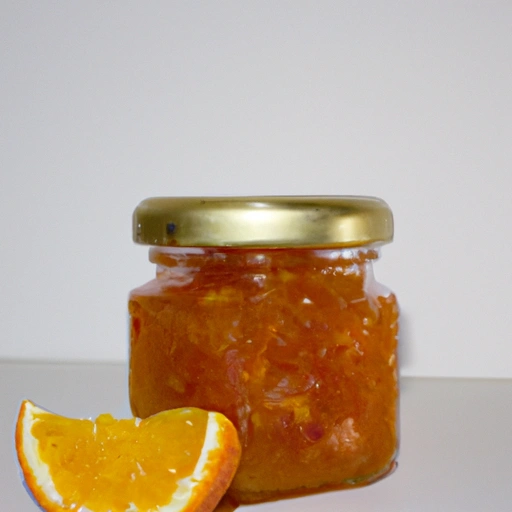Orange Marmalade
Description

Orange marmalade is a sweet and slightly bitter spread made from oranges, sugar, water, and sometimes pectin. The oranges are typically thinly sliced or chopped, with the peel included to add a unique bitter note. Orange marmalade is a versatile ingredient widely used in a variety of dishes, from breakfast to desserts. It's a staple in many pantries and can be found in various consistencies, from smooth to chunky, with varying degrees of sweetness and bitterness.
Common uses
Orange marmalade is commonly used as a spread on toast, scones, and muffins. It is also a popular filling for pastries, cakes, and cookies. In savory dishes, it can be used as a glaze for meat, particularly ham, chicken, and duck. Marmalade adds a zesty flavor to marinades and dressings and is a key ingredient in the classic British Paddington cocktail.
Nutritional value
Calories
Orange marmalade contains approximately 49 calories per tablespoon (20 grams or 0.7 ounces).
Protein
There is a negligible amount of protein in orange marmalade, usually less than 0.1 grams per tablespoon.
Fat
Orange marmalade is virtually fat-free, with less than 0.1 grams per tablespoon.
Carbohydrates
Carbohydrates are the primary macronutrient in orange marmalade, with about 13 grams per tablespoon, mostly from sugars.
Vitamins
Orange marmalade contains small amounts of vitamin C, although much less than fresh oranges due to the cooking process.
Minerals
It also contains trace amounts of minerals such as potassium and calcium.
Health benefits
While orange marmalade is high in sugar, it may offer some health benefits when consumed in moderation due to the presence of orange peel, which contains bioflavonoids and pectin. These compounds may have antioxidant properties and contribute to heart health.
Potential risks
The high sugar content in orange marmalade can pose a risk for weight gain and dental problems if consumed in excess. It may also lead to increased blood sugar levels, which is a concern for individuals with diabetes.
Common recipes
Orange marmalade is a staple in British breakfasts and is also used in a variety of recipes, such as marmalade cake, thumbprint cookies, and marmalade-glazed ham.
Cooking methods
It can be used straight from the jar or melted down as part of a sauce or glaze. It can also be incorporated into batters and doughs.
Pairing with other ingredients
Marmalade pairs well with creamy cheeses, nuts, and dark chocolate. In savory dishes, it complements the flavors of pork, duck, and mild fish.
Summary
Orange marmalade is a citrusy spread that has been enjoyed for centuries around the world. With its unique balance of sweetness and bitterness, it adds depth and complexity to both sweet and savory dishes. Its nutritional profile is characterized by its high sugar content, which should be considered when incorporating it into a healthy diet. Nevertheless, its culinary applications are vast and can inspire a wide range of delicious recipes.